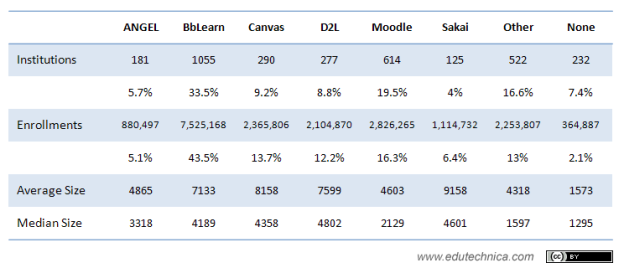Changes in “traditional” pedagogical approaches have been occurring in the West for a number of decades. Within Kazakhstan, the population centers are separated by large distances and the resultant issues of mobility of the education market are being observed through a number of indicators.
Keywords: learning anywhere, anywhen, student individual learning agreements.
The classic form of education in varying degrees, are now in crisis due to:
‒ the failure to provide all interested persons the possibility of obtaining the necessary education (territoriality);
‒ backlog of acquired knowledge on the level of knowledge and technologies (conservative);
‒ low adaptability of educational systems to the different socio-economic conditions (inertia);
‒ specificity of the education provided by a separate institution (local);
‒ not the entire list of specialties can be provided in a specific area regional universities (limited).
As one of the ways out of this crisis was through open education, the maximum use of new information and pedagogical technologies in training. Real steps to address these problems include: the creation of a unified educational information environment; the use of open forms of learning; ensuring open remote access to distributed information and technical and technological resources of the virtual educational environment.
Virtual Learning Environment (VLE) can be described as an informational space of interaction between all participants of the educational process, generated by information technology and communication, including a set of computer tools and technologies, to manage and present the content of the educational environment. [1]
In recent years, education has benefited from developments in the hardware and software for the organization allowing for a virtual educational environment revolution — the majority of schools and universities in foreign countries now have a functioning virtual educational environment. Ongoing research looks into the VLEs and the year on year change. [2] Although primarily looking at the USA, some analysis of Australia, Canada and the UK is included. Like for like comparisons cannot be done as the different countries have different reporting standards for the educational institutions.
Detailed 2014 LMS usage data for higher education institutions with > 800 enrollments (United States)

Virtual Learning Environment is an online system that allows teachers to share educational materials with their students over the Internet. What are the possibilities from a VLE?
‒ Communication — opens a limitless number of channels: forums, discussion threads, polls, instant feedback, etc.
‒ Performance of work — students do not have to physically look for his teacher to pass on their work.
‒ Storage resources — teachers have online storage space for documents, materials, etc. that can be shared within the team.
‒ Links to external sources — the way for all other online learning spaces are linked through the VLE.
‒ Integrated content — Recorded video, live newsfeeds, newspaper and magazine articles can be integrated as a dynamic feed homepage.
Application of VLE in the study of a particular discipline allows you to create conditions for the implementation of a student’s independent learning plan. Among VLE systems you can deliver various types of teaching materials: an introductory presentation; a set of theoretical material; test items; demo simulator; simulator for formation of separate actions; a list of references to literature with the directions on the Internet resources. The student is given a schedule of the educational process in the discipline, which proposes a processing sequence of topics and a list of practical training with an indication of the timing of practical problems. Thus, the student has the opportunity to plan their own workload based on specified terms. In addition, the preservation of data in a virtual environment today is very relevant, because it not only simplifies the work of the owner of the data, because all data is stored in one place, but also allows any other user to have access to this data. It should be noted also that the problem with the media or with random data loss will not affect the results of this work, which has been preserved in a virtual environment. [3]
The technical basis of VLE is a special software (software platforms, LMS-system), widely represented in the market of educational services.
There are different opinions about it on the basis of the software to create their own VLE. Preference may be commercial projects that are at various stages of use have technical and organizational support for developer companies. However, the use of free VLE increases the availability to, is the main and very significant advantage of them. [4]
Among the most popular systems are the following: Ilias, Moodle, Lotus, VLE, Prometheus, and WebCT. In addition to these larger scale systems, there are a number of alternative systems. The leaders in this category include Edmodo and Schoology.
Ilias and Moodle are open source systems (Open Source), that is, they are free and the source code is available to making it possible to edit and modify the code according to the needs of the institution.
Ilias — open international system for automation and the introduction of elements to the educational process and has the means to develop and publish training courses gives you the ability to create and manage student groups, that is, to a complete system, focused on the use of the Internet. [5]
Moodle is a software package for the organization to the Internet. Moodle is a course management system training enables teachers to build effective online courses and is a powerful tool through which you can transfer the traditional training sessions in the web space. [6] Moodle platform popularity is due to the following reasons:
‒ extensive functionality for all users,
‒ support for international standards of training and testing technology,
‒ the openness of code,
‒ GNU-license.
In the post-Soviet era the Moodle platform is widely used in Russia as part of the «Virtual University» project; «Electronic Russia»; «Education for the Future» (the Intel project);, Belarus (EHU);, Kazakhstan, etc. [7]
Although Moodle is free to download and install it has, depending on the implementation, a cost in terms of required hardware, usually a separate “Moodle server” along with the technical support to install and configure the system. Moodle is often installed with other software — Joomla the content management system and Mahara the e-portfolio management tool.
Edmodo provides a platform for teachers to create courses and add students. The course can then be accessed using an interface that has similarity to social networking. Teaching teams can be set up easily, with one teacher “leading” and the others being “co-teachers”. Resources can be added to a folder structure. The system has a component for testing and allows for discussion threads. The significant difference here, and with Schoology, is that the system is managed by the company, rather than being downloaded, installed and managed within the organization.
The development and implementation of the virtual learning environment requires:
‒ Definition of the system, application and technical support, which will be based on the development and implementation of the VLE;
‒ Representation of the educational institution on the Internet site by means of an educational institution;
‒ Teachers of the department participated in the development of didactic and methodological support of VLE (electronic educational materials, created by the technology and to the corresponding base areas of training educational institution);
‒ Implementation of educational and cognitive activity of students using the VLE;
‒ Consultation for teachers on issues of implementation of the VLE;
‒ Testing and introduction of VLE in the educational process on certain basic areas of training;
‒ Organization and regular educational institution in seminars on the implementation of the VLE with participation of leading scientists and developers of virtual environments;
The main part of the content of VLE is a training course (hereinafter — CC), which is a set of textual and illustrative materials, grouped by thematic criteria. The structure of the Criminal Code can be represented in the form of tree: root splits into threads, which consist of an illustrated lecture and test material; lectures, in turn, divided into sections, and are included in the tests with different questions choice answers. [8]
Responsibility for the development of the Criminal Code carries a teacher. In this connection, the focus in designing and implementing VLE should be given to the preparation of a proper faculty.
The current requirements for high school teachers, based on his computer competence, are quite high. The instructor should have sufficient experience in the use of modern information and telecommunication technologies for use in the educational process (work in LAN and WAN, the use of office applications, image editors, and multimedia tools). Also it is necessary to know the principles of creating tests and test items, the use of the test system in the educational process.
Summing up, it can be argued that the development of a virtual learning environment initiates the innovative nature of the pedagogical activity, since the use of new technologies focused on the education of the individual, capable of professional self-realization in the conditions of social challenges. Using virtual methodical support has a significant impact on the increase of knowledge, an objective to improve the quality of training, as well as to the information richness of educational services.
Which system to implement then becomes the topic of discussion? A larger organization may have staff with experience of the larger systems, including installation and configuration. Smaller organizations may lack this skill base but have staff wishing to move ahead with VLEs. The online sites provide a quick and easy approach to meet this need. The students, from the authors personal experience have found them simple to use, which can be a barrier with more complex systems
References:
- Vayndorf-Sysoeva M. E. Pedagogy in virtual learning environments: training complex special course / M. E. Vayndorf-Sysoeva. — M.: Publishing house of the Moscow State Open University, 2006. — 4.4 pp
- http://edutechnica.com/2014/09/23/lms-data-the-first-year-update/
- Marchuk N. Y. Psycho-pedagogical features of distance learning // Teacher education in Russia. Number 2013.
- S. F. Averyanov, S. V. Papshev Education — computer technology — Open Education // Telematics — 2002: Proceedings of the All-Russia. scientific-method. Conf. — SPb.: SPGITMiO 2002.
- Nicholas I. Information Technology in special education. — M.: Publishing Center «Academy», 2011.
- Moore M. G. Information and communication technologies in distance education / M. G. Moore etc. -. M.: Education Service, 2006.
- Troyan G. M. concept of distance education, its evolution and the role of information and communication technologies // IITE. MM: Mesi 2011.
- Zelenko L. S., Zagumennov D. A., Zinchenko O. Fundamentals of virtual educational environment // Bulletin of the Samara State Aerospace University. 2012. № 7 (38).







